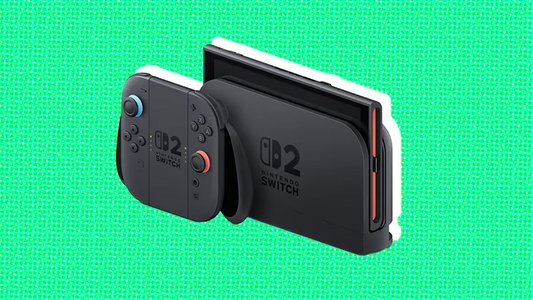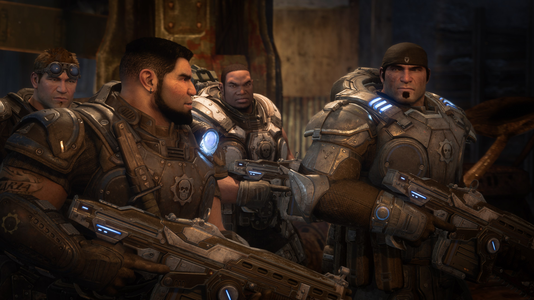One of the obstacles to creating your own RPG is: what the heck do I do for math?
There’s now been well over 30 years of computer RPGs, in both C- and J- styles, and one feature most of them have in common is that they’re awfully vague about their combat math.
CRPGs in the really old days often cribbed their battle mechanics from Dungeons & Dragons. Any game that uses the term Armor Class is basically admitting this outright. If Armor Class counts down as it improves, it’s being extra cavalier about its inspiration.
There is an advantage to this, though: players familiar with D&D will know generally how things work, that an improved AC (whichever way it counts) means a decreased chance of being hit, and that a weapon like a longsword will probably do a Gygax-approved 1d8 points of damage.
I cannot say if early JRPGs also passed through a phase where most developers outright stole their system from D&D, but my belief, from what I have seen (which mostly comes from reading Hardcore Gaming 101) is that they did not. It seems like what happened there is that popular early JRPGs, like Dragon Quest and Dragon Slayer, were inspired not by D&D but by Western games that were inspired by it, like Wizardry and Ultima. Coming at their ideas from one or more removes meant they weren’t struck in awe of TSR’s beast like many early RPGs seemed to be, and went on to develop their own ideas sooner.
But that meant that players didn’t have those assumptions to fall back on as far as how the game system worked. What the heck does a point of “Strength” mean, in game terms? What is the proper effect or armor? How strong should magic be? Having only other games for inspiration, themselves with poorly-explicated systems, meant everyone came up with their own system, a state which largely persists to this day.
Some things to keep in mind...
When you, too, make an RPG, you'll have to come up with the math to underlie it. You may have to take into consideration things like:
How strong should PCs (“Player Characters”) start?
Should there be experience levels? (Hint: Consider not having them! These days, many traditional RPGs that aren’t D&D or retroclones have abandoned experience levels! They could be on to something! Maybe do more gradual character growth, or even throw out experience-based growth completely like Brogue does!)
Assuming you’re doing levels, how much does a character rise in power when gaining a level?
How strong should equipment be? What portion of character power should come intrinsically, and how much from what he wears and uses?
What is the numerical difference between, say, a fight-y class and a magick-y class?
How much trouble should a party be in if all its mages are dead? If all its fighters are?
Should parties be automatically refreshed after victories? (My opinion: no! Party depletion is an important element of gameplay!) Should a character be refreshed after gaining a level? (My opinion: probably not unless there’s a strong play reason, like in Desktop Dungeons!)
If a party runs out of resources and can’t afford an inn, how can they de-screw themselves?
What keeps adventurous players from venturing into difficult areas and accelerating their growth? Should you even worry about that?
I am not here to give you solid answers. In fact, I think there’s multiple good answers to all of those questions! It all depends on what you’re going for in your design, how you want the game to play and the player to experience. But what I can do is, by examining a couple of classic games (with the help of a bevy of FAQs), tell you how some classic games did it. Maybe that will get you started off in finding your own solutions.
"Abstract math systems can only take you so far by themselves; once you know what the calculations look like, you have to design monsters to put up to them."
Whatever you decide, take note that is almost certainly just the beginning of a journey. Abstract math systems can only take you so far by themselves; once you know what the calculations look like, you have to design monsters to put up to them. The same battle system can be either very easy or very hard depending on the numbers you give your monsters, and even with excellent foresight, it can be easy to get them wrong. Only playtesting, both by yourself and others, can help you there.
Note 1: For the most part, we don’t discuss bugs in the games, focusing on what the designer intended, although with FF1 we have to exclude whole parts of the design (weapon elemental effects) because they simply don’t work in the original game. This also means we don’t discuss overflow bugs, which were fairly common on 8-bit hardware.
Note 2: We’re interested in the gist, not the specifics. Some of these formulas may be missing a +1 or -1 somewhere or other, and special cases like blindness or paralysis may be ignored. If the omission is insignificant to the general case I am not overly concerned. My aim is to provide examples to you for basing your systems, not make recreations. If you really want to know the details, I provide all my sources for this article at the end where you can read about them yourself.
The Dragon Quest Attack Formula
The power of a character’s normal attack is the sum of their Strength statistic and the attack power of their weapon and assisting items. Skill attacks have their own formulas, as do magic spells, which utilize the Intelligence stat in later games; the first game has no such stat, and spells simply heal/cause damage in a set range for that spell.
Defensive power is the sum of the player’s Defense (or Agility) plus all his sources of defense, such as armor, shields and miscellaneous items like the Dragon’s Scale. Similar to the player, monsters have Attack and Defense power, although they are not modified by equipment.
One of the strengths of the Dragon Quest series’ design is that the underlying math is quite simple. While some minor specifics change between games, the formula for doing base damage is largely the same between games, and is similar between player and enemy attacks. It is this:
(Attack Strength – (Opponent Defense / 2)) / 2
For strategic and thematic variety, there are other means of doing damage that go outside this formula, but this gives the game a baseline. This is the standard reward a side receives for
No tags.




































